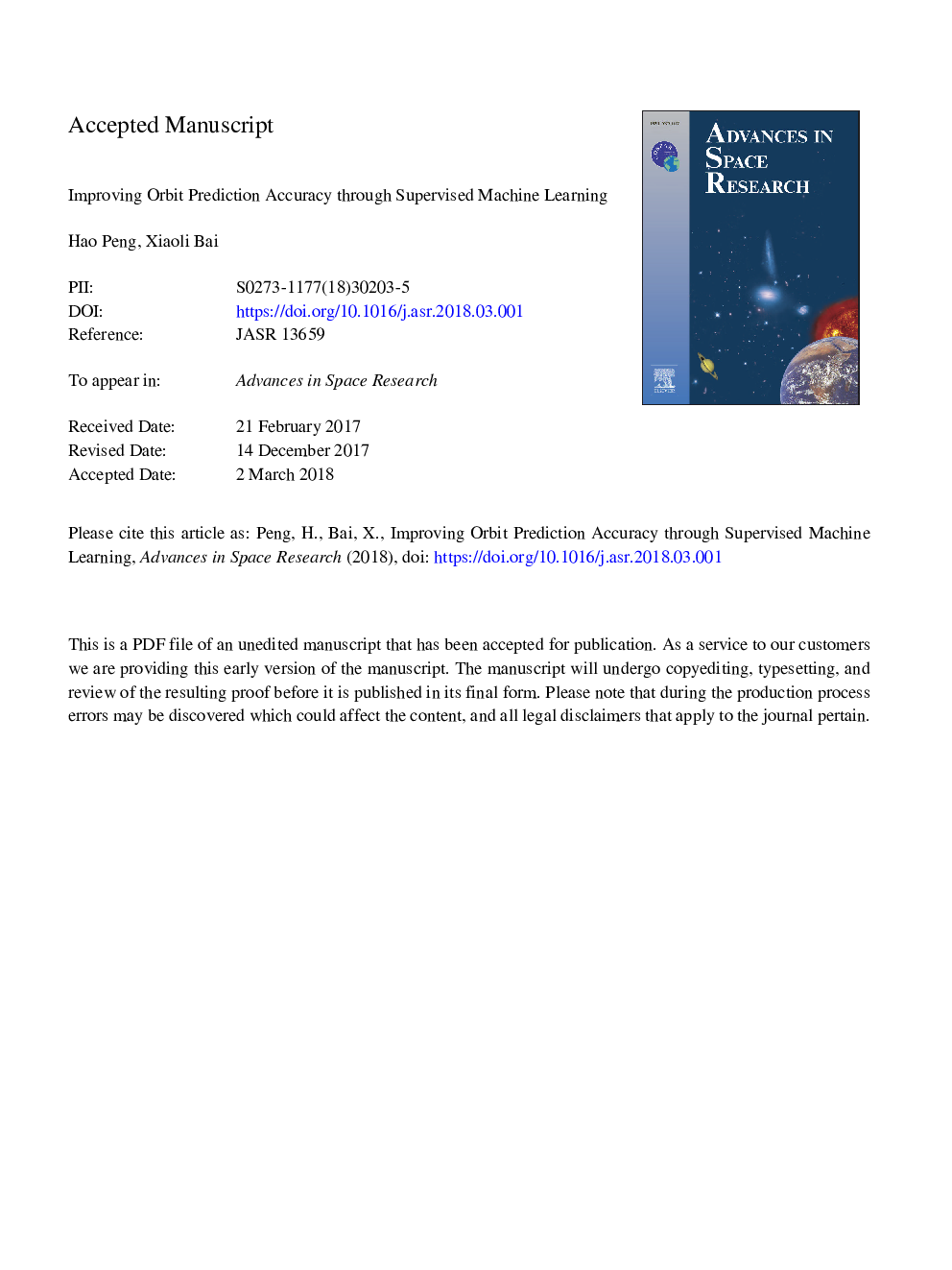| Article ID | Journal | Published Year | Pages | File Type |
|---|---|---|---|---|
| 8131940 | Advances in Space Research | 2018 | 32 Pages |
Abstract
Due to the lack of information such as the space environment condition and resident space objects' (RSOs') body characteristics, current orbit predictions that are solely grounded on physics-based models may fail to achieve required accuracy for collision avoidance and have led to satellite collisions already. This paper presents a methodology to predict RSOs' trajectories with higher accuracy than that of the current methods. Inspired by the machine learning (ML) theory through which the models are learned based on large amounts of observed data and the prediction is conducted without explicitly modeling space objects and space environment, the proposed ML approach integrates physics-based orbit prediction algorithms with a learning-based process that focuses on reducing the prediction errors. Using a simulation-based space catalog environment as the test bed, the paper demonstrates three types of generalization capability for the proposed ML approach: (1) the ML model can be used to improve the same RSO's orbit information that is not available during the learning process but shares the same time interval as the training data; (2) the ML model can be used to improve predictions of the same RSO at future epochs; and (3) the ML model based on a RSO can be applied to other RSOs that share some common features.
Related Topics
Physical Sciences and Engineering
Earth and Planetary Sciences
Space and Planetary Science
Authors
Hao Peng, Xiaoli Bai,
